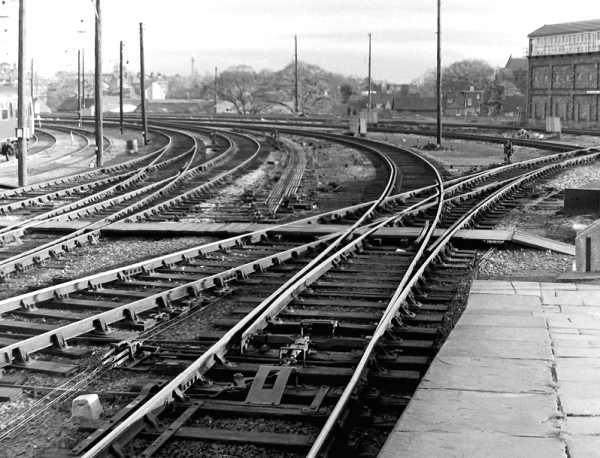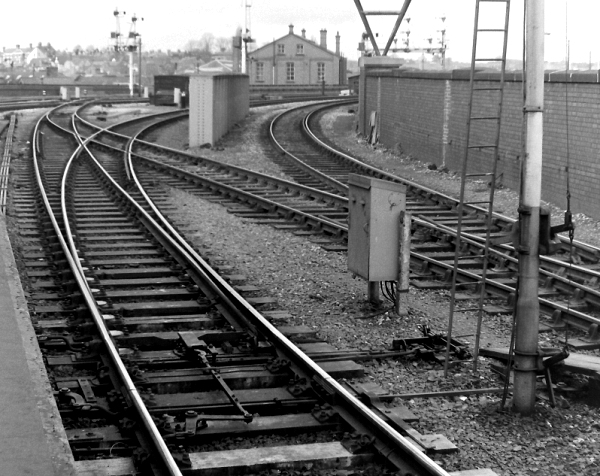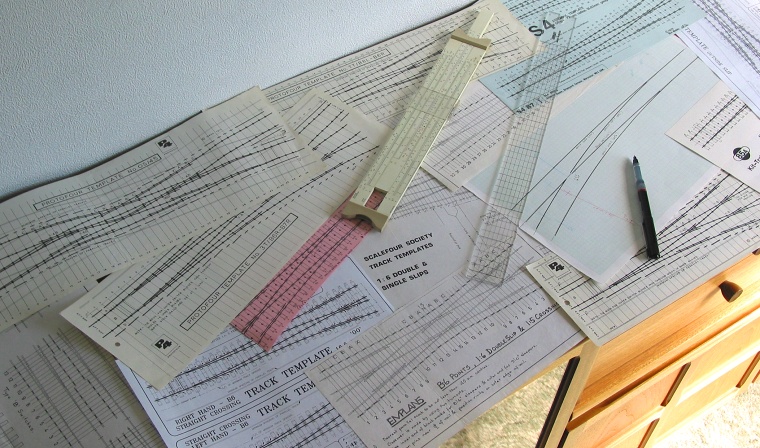| Templot Companion | search | remove search highlighting |
Templot Explained - 2. yes, I build track
2. yes, I build track
Still with me? You build model railway track, or you are intending to, or maybe you want to design some trackwork to be built for you.
If so you will know that the first thing you need is a drawing or template, usually printed on paper, on which to construct the trackwork.
Let's go back 40 years to 1978.
Traditionally such printed templates have been available commercially, and from hobby organisations such as the EM Gauge Society. If you are familiar with them, you will have noticed one inescapable fact. Almost without exception they are straight.
Whereas if you are out and about on the railway, especially the traditional steam-era railway, you can't help noticing that a great deal of track is curved -- in some places the majority of it.
Here for example is a curved outside-slip, and on the left a curved crossover:

And here we have a curved half-scissors, and on the right a sharp curve fitted with a continuous check rail:

I took these photographs at Shrewsbury in 1978. It may not be a coincidence that just a year later in 1979, I started work on what was to become Templot. 
Because if you want to model such track, a straight paper template isn't a lot of use. Yes it can be curved after a fashion with scissors and glue, but it's very difficult to match a specific radius that way and to align several such templates together smoothly.
Here is a selection of track-building templates from pre-Templot days. Notice that the only one which is curved is the hand-drawn one. All the others are straight:

Precision hand drawing is not for everyone. On a large layout it is a lot of work, and a change of design means starting again. Which is where computers came in. This computer program was originally conceived as a means to generate and plot curved turnout templates, so I called it "Templot". All those years ago computers were largely unknown in modelling, and it was another 20 years before they were common enough in most homes to make it worthwhile releasing a version of Templot for everyone to use. The first public version was shown to a puzzled model railway hobby in 1998.
I have wandered down Memory Lane here because it helps to understand the workings of Templot if you know where it came from. The original purpose was to print individual model track construction templates, especially curved ones. And in many ways that remains its primary purpose. The complex track layout planning functions came later, and are still in some ways secondary to that.
This also explains why an item of trackwork in Templot is called a "template" -- not at first sight an obvious term, or one used in other track planning software.
link to this page: https://c7514493.myzen.co.uk/dokuwiki/doku.php?id=2_yes_i_build_track